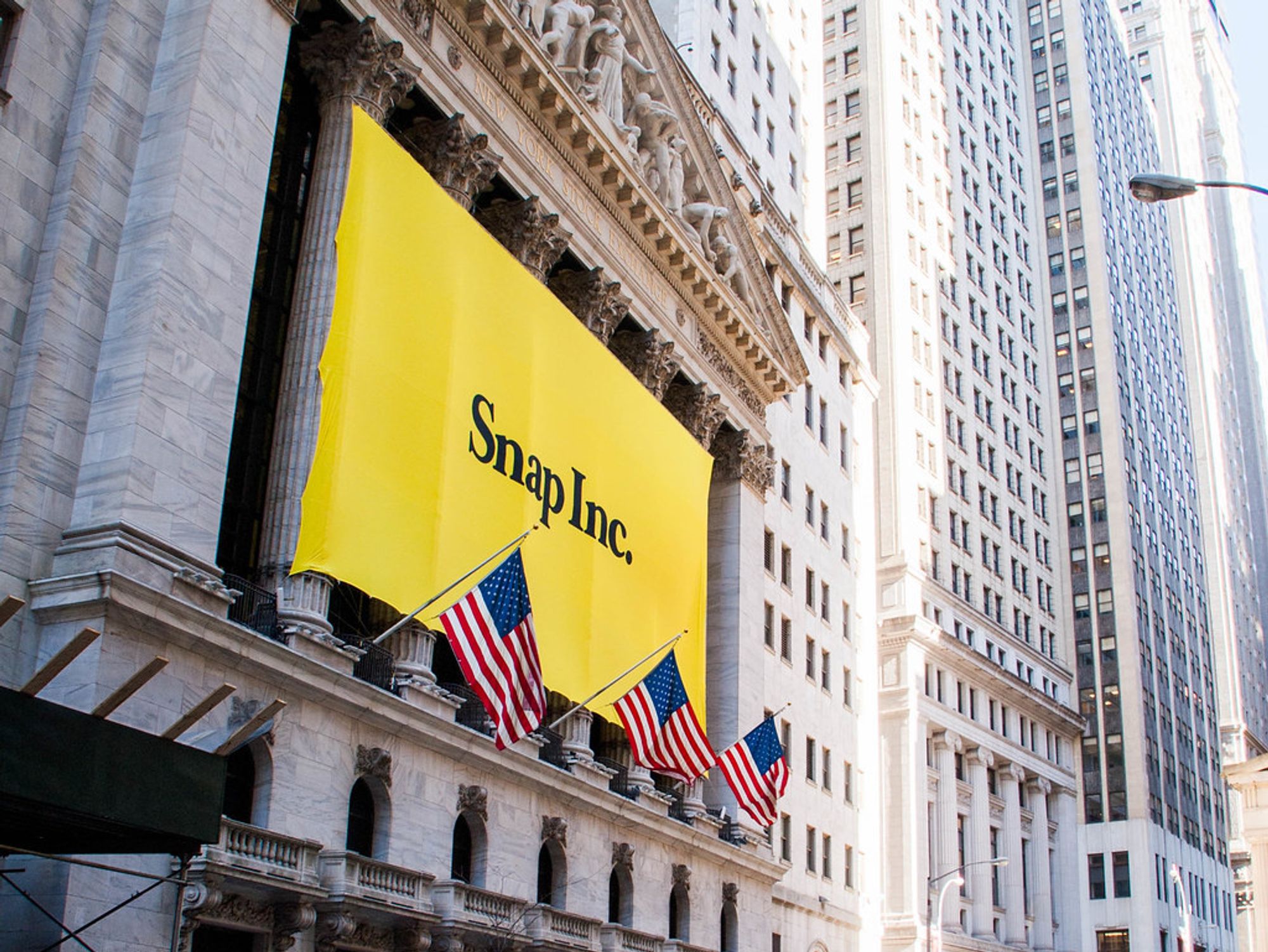Snap's 'Major Opportunity' Depends on Explaining How It Works to Potential Advertisers
Sam primarily covers entertainment and media for dot.LA. Previously he was Marjorie Deane Fellow at The Economist, where he wrote for the business and finance sections of the print edition. He has also worked at the XPRIZE Foundation, U.S. Government Accountability Office, KCRW, and MLB Advanced Media (now Disney Streaming Services). He holds an MBA from UCLA Anderson, an MPP from UCLA Luskin and a BA in History from University of Michigan. Email him at samblake@dot.LA and find him on Twitter @hisamblake

Even though most of Snap's potential advertisers have no clue how to use Snapchat, the company forecasts multiple years of 50% revenue growth.
That was the big takeaway from Snap's first ever Investor Day on Tuesday. Following a banner year that saw the company's stock price more than quadruple, the market continues to like what it sees. Snap's shares were up 11% by market close and the company surpassed a $106 billion market cap.
Yet to keep pace with the market's optimism, analysts say Snap's challenge will be in monetizing its 265 million users who check in on the app an average of 30 times a day. And key to that is educating advertisers about how Snapchat works.
The nine-year-old public company's flagship app is a hit among young people – reaching 90% of 13-24 year-olds in the U.S. – but as its usage declines with age, so does familiarity with how it works.
"We are selling to an audience oftentimes who don't use Snapchat on a day-to-day basis," said chief business officer Jeremi Gorman in a question and answer session at the tail end of the three-hour virtual event.
It's helpful that over the past few years Snap has focused on "tightening up the product," said KeyBanc analyst Justin Patterson. That effort has included adding several new features and reorganizing the user experience.
On Tuesday, chief executive Evan Spiegel said the company's future innovation will now transition into growing around the five "core building blocks" of its Camera, Chat, Stories, Maps and Spotlight features.
Last summer, Snap added a toolbar on Snapchat to help users navigate across these five features. Numerous executives emphasized Tuesday that these features are at various stages of maturity, and therefore represent different opportunities for the company's growth.
Explaining Snap's rosy revenue projections, Chief Finance Officer Derek Andersen said the biggest near- and medium-term opportunities are in the Camera (he called AR lenses a "multibillion dollar opportunity") and Stories (the widely copycatted chronological images and videos that Snap pioneered, and which Andersen said includes Snapchat's curated content feature, Discover).
In the longer term, Andersen said Maps are another "multibillion dollar opportunity" to connect local businesses to users. Spotlight is also in its early stages, as the TikTok-like feature launched just a few months ago.
Andersen added that Snap's relatively low average revenue per user compared to competitors like Twitter and Facebook offers reason for optimism.
Furthering the case, Gorman noted that although Snap reaches nearly half of all U.S. smartphone users, it captures less than 2% of the $142 billion U.S. digital advertising market – which, she said, emarketer has forecasted to grow at 14% per year.
Recognizing that educating advertisers on how Snapchat works is its biggest hurdle, in August the company ran its first business-facing marketing campaign. Chief Marketing Officer Kenny Mitchell said the campaign, alongside Snap's other efforts to train marketers, has resulted in more advertisers completing Snap's business-education certification over the past seven months than in the prior three years combined.
Still, whether Snap wants to lure more companies to spend money on the six-second unskippable ads that appear in between Stories, set up a listing on Maps or showcase a brand or highlight a sale with an AR lens campaign, the self-styled camera company out of Santa Monica remains in translation mode.
Toward the end of the event, Gorman walked analysts through a hypothetical example of how her team tries to help advertisers understand how the young people that they're trying to reach use Snapchat.
"Open your phone," she said. "What apps do you see that you use the most?"
Most of the time, she said, the response is some combination of messaging, camera and map.
"For this generation, for 13 to 34," her demo continued, "those things are all together in Snapchat."
Moving forward, there "is a major [monetization] opportunity for [Snap]," said Piper Sandler analyst Tom Champion. "It just remains to be seen whether or not they can do it."
- Snap Beats Expectations, Up 17% Year Over Year - dot.LA ›
- Snap Shares Sink Despite Revenue Gains in Q4 - dot.LA ›
- Snap Shares Soar on Upbeat Third Quarter Earnings - dot.LA ›
- 'A Multi-Billion Dollar Platform': How Snap Plans to Turn Its Map Feature Into a Cash Cow - dot.LA ›
Sam primarily covers entertainment and media for dot.LA. Previously he was Marjorie Deane Fellow at The Economist, where he wrote for the business and finance sections of the print edition. He has also worked at the XPRIZE Foundation, U.S. Government Accountability Office, KCRW, and MLB Advanced Media (now Disney Streaming Services). He holds an MBA from UCLA Anderson, an MPP from UCLA Luskin and a BA in History from University of Michigan. Email him at samblake@dot.LA and find him on Twitter @hisamblake




